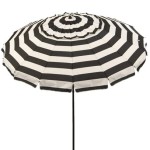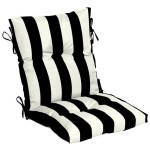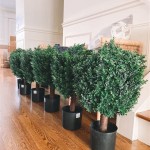```html
Frank Lloyd Wright Outdoor Furniture: A Legacy of Integrated Design
Frank Lloyd Wright, a name synonymous with architectural innovation and a philosophy of organic design, extended his artistic vision beyond the structures themselves to encompass the surrounding landscapes. While primarily celebrated for his groundbreaking buildings, Wright also designed furniture, lighting, and other interior elements that were integral to his holistic approach. Less widely recognized, but equally significant, are his contributions to outdoor furniture design. These pieces, often custom-designed for specific projects, exemplify Wright's commitment to blurring the lines between interior and exterior spaces. This article explores the key aspects of Frank Lloyd Wright's outdoor furniture, examining its design principles, materials, and its enduring influence on contemporary outdoor living.
The Principles of Organic Architecture Applied to Outdoor Furniture
Wright's architectural philosophy, known as organic architecture, emphasized harmony between human habitation and the natural world. This principle permeated every aspect of his designs, including outdoor furniture. He believed that buildings should grow from their sites, reflecting the surrounding landscape and integrating seamlessly with nature. This idea translated into outdoor furniture that was not merely placed in the landscape but felt as though it belonged there. He sought to create outdoor spaces that were extensions of the home, offering opportunities for relaxation, contemplation, and connection with the environment.
One of the core tenets of organic architecture is the use of natural materials. Wright favored materials such as wood, stone, and brick, chosen for their inherent beauty, durability, and ability to blend with the environment. This preference extended to his outdoor furniture, where wood, particularly redwood and cypress, was often the primary material. The natural grain and texture of the wood were celebrated, enhancing the organic feel of the pieces. Stone was used occasionally for bases or accents, further grounding the furniture in its natural setting.
The emphasis on horizontal lines is another defining characteristic of Wright's architecture and furniture. Low-slung profiles and elongated forms were intended to echo the horizontality of the landscape, creating a sense of stability and repose. This is particularly evident in his outdoor seating, which often featured wide, comfortable surfaces designed for lounging and contemplation. The use of horizontal lines also helped to visually connect the furniture with the architecture of the building, reinforcing the overall sense of unity.
Wright's designs also incorporated geometric forms inspired by nature, such as squares, rectangles, and triangles. These shapes were often arranged in simple, repetitive patterns, creating a sense of order and harmony. This approach can be seen in the slat designs of many of his outdoor chairs and benches, where the repeated lines create both visual interest and structural support. By combining these geometric forms with natural materials and horizontal lines, Wright achieved a distinctive aesthetic that was both modern and timeless.
Materials and Construction Techniques
The selection of materials was crucial to the success of Wright's outdoor furniture designs. He prioritized materials that were not only aesthetically pleasing but also durable and weather-resistant. Wood was the most common choice, with redwood and cypress being particularly favored for their natural resistance to decay and insects. These woods were often left unfinished or treated with minimal finishes, allowing their natural beauty to shine through and allowing them to weather naturally over time.
The construction techniques used in Wright's outdoor furniture were typically straightforward and functional, emphasizing the integrity of the materials. Joints were often reinforced with dowels or mortise-and-tenon joinery, ensuring strength and stability. Metal fasteners were used sparingly, as Wright preferred to rely on the natural strength of the wood. The focus was on creating pieces that were not only beautiful but also built to last.
In some cases, Wright incorporated other materials into his outdoor furniture designs, such as stone, concrete, and metal. Stone was often used for bases or accents, providing a sense of weight and stability. Concrete, typically cast in simple geometric forms, was sometimes used for planters or other decorative elements. Metal, usually wrought iron or steel, was used for frames or supports, adding a touch of industrial flair to the designs. However, even when incorporating these materials, Wright always maintained a focus on natural materials and organic forms.
The use of color in Wright's outdoor furniture was typically restrained, reflecting his preference for natural tones and textures. Wood was often left unpainted or stained with subtle, transparent finishes that allowed the grain to show through. Stone and concrete were typically left in their natural colors, adding to the organic feel of the pieces. In some cases, Wright used muted colors, such as greens, browns, and grays, to blend the furniture with the surrounding landscape. The overall effect was one of understated elegance and harmony with nature.
Examples of Frank Lloyd Wright Outdoor Furniture and Their Enduring Influence
While Wright did not mass-produce outdoor furniture, several notable examples exist, primarily designed for specific residential projects. These pieces offer valuable insights into his design philosophy and demonstrate his ability to create outdoor spaces that were both functional and aesthetically pleasing.
One of the most famous examples is the furniture designed for Taliesin West, Wright's winter home and architecture school in Scottsdale, Arizona. The outdoor seating at Taliesin West is characterized by its simple, geometric forms and the use of redwood as the primary material. The chairs and benches are designed to be both comfortable and durable, able to withstand the harsh desert climate. The furniture's low-slung profiles and horizontal lines echo the surrounding landscape, creating a sense of harmony and integration.
Another notable example is the furniture designed for Fallingwater, the iconic house built over a waterfall in Mill Run, Pennsylvania. The outdoor furniture at Fallingwater is characterized by its clean lines and the use of natural materials such as stone and wood. The seating is designed to be both functional and aesthetically pleasing, providing opportunities for residents and visitors to enjoy the beauty of the surrounding landscape. The furniture's design is carefully integrated with the architecture of the house, blurring the lines between indoor and outdoor spaces.
The influence of Frank Lloyd Wright's outdoor furniture can be seen in contemporary designs that emphasize organic forms, natural materials, and integration with the landscape. Many modern outdoor furniture designers draw inspiration from Wright's use of horizontal lines, geometric shapes, and earth tones. The emphasis on sustainability and the use of recycled or reclaimed materials also reflects Wright's commitment to environmental responsibility. His legacy continues to inspire designers to create outdoor spaces that are not only beautiful but also functional, sustainable, and harmonious with nature.
The enduring appeal of Frank Lloyd Wright's outdoor furniture lies in its timeless design and its ability to connect people with nature. By embracing organic principles, utilizing natural materials, and emphasizing horizontal lines, Wright created outdoor spaces that were both inviting and inspiring. His designs continue to influence contemporary outdoor furniture, reminding us of the importance of integrating architecture and nature in creating truly livable spaces.
```
Image Result For Origami Chair Frank Lloyd Wright

Frank Lloyd Wright Racine Lounge Chair Steelcase

Frank Lloyd Wright Works For Sale Upcoming Auctions Past Results

Frank Lloyd Wright Rockford Chair Steelcase
Frank Lloyd Wright The Architect Behind Furniture Vermont Woods Studios Eco Blog

Peacock Chair By Frank Lloyd Wright And Its History

Frank Lloyd Wright Inspired Home With Lush Landscaping Hgtv

The Garden Room At Taliesin West Frank Lloyd Wright Foundation

Rietveld Inspired Garden Chairs

Classic Westport Chairs








